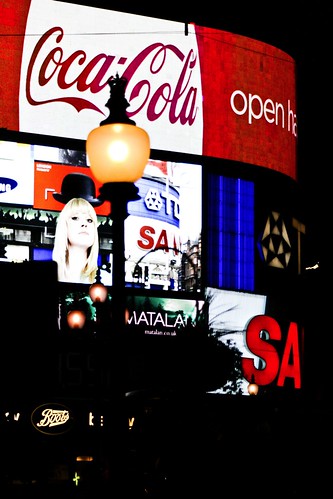 According to CBS Business, technicians from facebook have recently filed patents in support of their plans to combine search results with their own intimidate understanding of any given user’s social graph. In this blog post we’ll look at what this means for any brand looking to activate consumers across social spaces alongside the pitfalls that curated search experiences create.
According to CBS Business, technicians from facebook have recently filed patents in support of their plans to combine search results with their own intimidate understanding of any given user’s social graph. In this blog post we’ll look at what this means for any brand looking to activate consumers across social spaces alongside the pitfalls that curated search experiences create.
The film Minority Report depicts a candid view of the future in which brands and consumers coexist harmoniously; each side party to an open dialogue in which marketeers disruptively communicate with customers triggered only by iris recognition as members of the public pass by stores, billboards and advertisements. As the coffee lover walks past Starbucks they hear of a special offer on their favourite caramel macchiato; McDonalds suggests to Joe Public that he should drop by for a Big Mac simply because he is in the vicinity of their outlet at lunchtime. While we’re still a long way off this (marketeers’) utopian dream of CRM-on-acid, facebook’s recent patent application to combine social search with social graph insight provides us with the first stepping stone towards this vision.
First though: what’s this all about? Perhaps the best way to explain things is with a quick recap of the evolution in the past few years in social media and search.
To begin with, search was a fairly clunky beast. You told Google (or others) what you were looking for in the form of a text string – and Google told you (as best it could) what information it held that it felt was most relevant to your search request. Those results were provided in isolation – that is to say they are ranked and returned to you based on what Google determines as relevance. It didn’t matter too much who you were; only what you were looking for.
Next up, we had social search. Here, the focus is not so much on search per se, but social browsing and recommendation from friends and other contacts. Here, it did matter who you were, but problems stemmed from social search tools lacking the critical mass to know enough about you to make the experience genuinely useful. If you bought an item from Amazon, you could share the news of your purchase on facebook (et al) or crowdsource recommendations from your emerging social graph, but very little beyond that. Social search slowly evolved into community commerce, with the recent rise of Groupon, LivingSocial and Wahanda demonstrating just a few of the ways this might go in the future.
Now, here’s the rub. In the past few years social data has expanded in reach to include many new facets of a consumers’ online activity. Take location, for example. What started out as a ludic element to Foursquare (in which brands invited customers to check-in to their stores) soon evolved into a genuine utility for social recommendation by space; if you checked-in at Cafe Nero on Regent Street you could see what other people thought and even what your friends’ opinions were. But with the advent of ‘always on’ location check-in apps there is the increased opportunity for brands to interact with consumers coming into their physical domain – just as Minority Report depicts. The question is: who should act as the guardian between the consumer and that disruptive brand?
Facebook’s latest patent application aims to bridge the void between relevance, social recommendation and search by using your social graph as the barometer for relevance in any engagement with brands online. That is to say: if you’re looking for something via search, facebook will tap into your social connections (and relevant degrees of separation) to ascertain the results it will deliver back, based on how others around you interact and refer to those brands. Relevance becomes social…and brands looking to engage with consumers across social media need to carry an increasing awareness of the influence that facebook will have in filtering your content to users looking to access information. This gives rise to the concept of ‘curated search’, where it does matter who you are, but increasingly who you are with being used to fill in any gaps in knowledge about you.
Think this is science fiction? Think again. Data modelling is big business and – although a cerebral challenge – the insights gleaned from curated search are startling. Just this week Marissa Mayer spoke at SXSW on how it is possible to predict with 98% accuracy whether a couple will get divorced within 2 years, based on credit card transactional data alone (the algorithm, presumably, is to look for receipts of hotel rooms and microwave meals for one?). By looking at your social graph brands can learn huge amounts about what it will take to influence and persuade you to purchase, which is why social media monitoring sites devote so much development time to influence algorithms alone. A glance at Market Sentinel, eCairn or Klout shows how seriously some people take it.
The principle of social curation via the social graph is more interesting than search alone, however. What facebook has successfully done – and continues to do – is position itself as the social guardian for any given user vis-a-vis the brands that want to interact with it. Like Google, it is one of the few bodies privy to your holistic social, commercial, academic and sexual activity online – and so occupies a stranglehold as the guardian of the ‘trusted brand’ against ‘disruptive brands’ looking to interact with you online. With the rise of other social facets like location and social recommendation, brands are increasingly willing to engage in social media outreach campaigns that seek to interrupt consumers approaching a point of sale (either real or virtual) for the purposes of moving them towards conversion. Imagine walking down Oxford Street with Loopt on your iPhone only to be interrupted every 30 feet by each individual shop trying to engage with you and entice you in with an offer. It would soon get tiring. But other than Google and Facebook, who else knows enough you well enough to act as the filter between disruptive engagement and your genuine social search needs? And imagine how tired you would get of that constant interruption if it took place online? If every charity or chugger jumped on you at every expression of sympathy for any cause that fell into your facebook feed?
What we need, ultimately, are clear rules of engagement for brands looking to launch a . More and more prospective clients view outreach as a process for disturbing consumers and selling them products. Increasingly, fewer clients understand that the way to be influential is to enter via the social graph. Now that social data surfaces more visibly, brand tactics need to get that little bit smarter or curated search will just shoot them down. Disruptive engagement needs to be highly targeted, which is why outreach needs to be placed in the hands of those who understand the sensitivities and context in which consumers operate. Whether we’ll get to the situation in Minority Report remains to be seen, but better targeted conversation than ill-directed noise, for agencies, brands and consumers alike.
[image: ]





